SIA cabin crew 'legend' looks back on missed birthdays, jet lag and meeting Lee Kuan Yew in 46 years of service
For decades, Mr Ng Yak Keng's workplace was in the skies but he has a fear of heights, which bemused his family members.
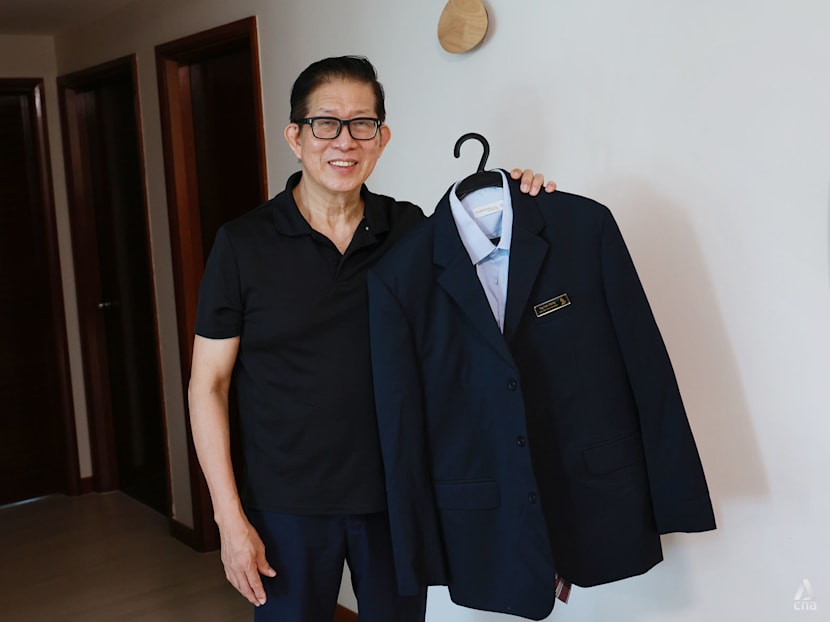
Mr Ng Yak Keng showing his uniform with Singapore Airlines. He has held the job of flight attendant since he was 21 years old. (Photo: CNA/Raj Nadarajan)

This audio is generated by an AI tool.
Meeting Mr Ng Yak Keng on a Friday (Aug 29) afternoon in his Tampines flat, it was hard not to notice the 67-year-old's polished demeanour.
Even in the comfort of his home, the month-old retiree still exuded all the traits of a model service worker: black hair slicked back, thick-framed glasses perched neatly on his nose and an ever-obliging smile firmly in place.
Dressed in a simple black polo tee, his tall and trim figure moved about the flat with a practised ease.
Most notably, phrases such as "certainly" or "of course" punctuated his casual everyday speech, delivered with a slight upbeat twang – a living remnant of his recently concluded 46-year tenure as a cabin crew member with the Singapore Airlines (SIA).
In a society where it is common for people to job-hop every few years, Mr Ng is an anomaly: He has spent his entire working life in the same job with the same company.
"I never thought of leaving the airline, because this has been my life," he said.
To date, he is one of the longest-serving cabin crew members the airline has ever had. In his own experience, he has yet to encounter another flight attendant who has outdone him in terms of service longevity.
"I was very comfortable in the job, flying and coming back. As every crew member will tell you, it suits their lifestyle and it suited mine as well."
On his dining table, he had stacked folders upon folders that were stuffed with half a decade's worth of rosters and flight schedules, the pages curled and sepia-toned with age.
He has kept remarkably detailed records of all his flights, from short turnaround trips to Southeast Asian cities such as Jakarta, Indonesia to the long-haul layover journeys to destinations such as New York in the United States.
He would have been more than happy to remain in the skies, if not for health concerns in the last two years.
At the start of 2024, he fell sick with pneumonia and the recovery was not as quick as he had hoped. One bout of pneumonia soon turned into two, and he started worrying about whether he could continue working to the same standard he had been doing for four decades.
Over the next few months, he realised that he could no longer ignore the toll it was taking on his body. It was time to step down – a tough but pragmatic decision after half a century spent in the skies.
WHEELS UP AT 21
How does one start a long and successful career in flying?
"I followed my friends," Mr Ng said simply.
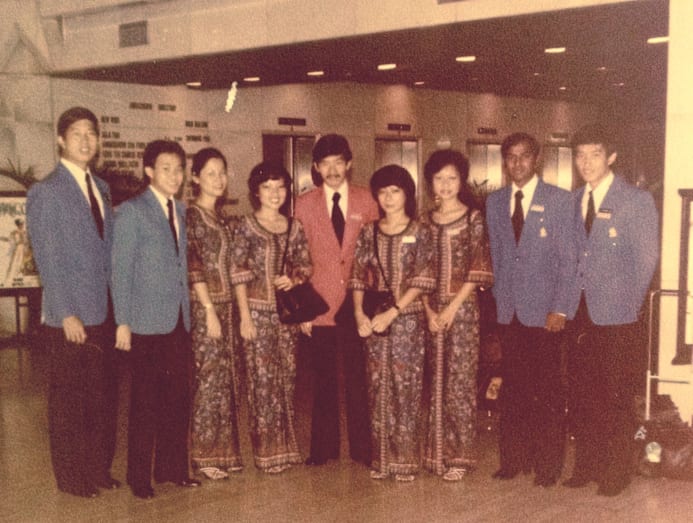
At 21 years old, Mr Ng was fresh out of National Service and mulling over job options. He applied for two jobs, but was unsuccessful.
Taking a cue from friends already employed by SIA, he turned his attention there.
At the time, the airline was "very aggressive" in hiring, which made it easier than he initially expected.
"I was accepted immediately," Mr Ng said, notes of bewilderment and disbelief still evident in his voice.
With no clue what he was getting into, he prepared nothing for the interview. No research or reading on flying and aviation, no shopping for new clothes. He simply showed up and, in his words, "went with the flow".
After an "almost absurdly" brisk group interview conducted with eight other young male candidates, his name was called. "That was the beginning of my adventure with Singapore Airlines," he said, smiling.
Almost immediately, Mr Ng was inducted into a two-month training programme, a process he described as "much faster" compared to the current three- to four-month training period for new employees these days.
Having just left the army, he and his peers went from military exercises and regimens to daily drills on what kind of utensils to use, how many courses a meal has and what types of drinks can be paired together with food.
"We used to have food slammed straight onto our mess tins. (Suddenly) we had to wear a tie and do all these prim and proper things," Mr Ng said with a laugh.
Besides learning to carry and comport himself in front of passengers, he had to get used to anticipating their needs and familiarise himself with various strategies to appease them.
Curiously, his favourite part of this process was learning about cheese, the differences between camembert and gouda, for instance, or which varieties paired best with grapes, apricots or crackers.
Mr Ng vividly recalled his very first working flight, a five-hour journey to Perth, Australia. Before that day, he had only been on short training flights to Jakarta, making this not just a professional milestone for him but a personal one.
He was buzzing with excitement as he stepped onto the 707 aircraft with his seniors. Then, he was laser-focused on watching his seniors, learning how to efficiently take out trays, heat meals and ensure that every passenger was served.
It turned out to be a relatively smooth first initiation into international travel, until he arrived in Perth and discovered there was more to crossing borders than boarding flights.
Unaware of the country's strict prohibitions on importing live plants, Mr Ng was carrying some flowers with him into Australia at a friend's request. Later at immigration, he was mortified when he was singled out in front of everyone.
"The (immigration officer) took one look at me and shouted at the top of her voice, 'Agriculture!'," Mr Ng said with a sheepish chuckle.
He left the Perth airport that day with no flowers but a new funny story to tell at parties.
LESSONS LEARNT THROUGH FLYING
Flying also gave Mr Ng a lot of exposure to the world beyond Singapore.
"Every country is fantastic," he said. "If you like history, go to Egypt or China. If you enjoy food, go to Bangkok or Hong Kong."
He was effusive about the "vibrancy" of places such as Dubai and India, "especially the different parts of India, not just Delhi or Bombay".
More than the landmarks, the many opportunities to immerse himself in different cultures and perspectives had a profound impact on him, from the liberal openness of some societies to the strict conservatism of others.
"You begin to be more accepting (of differences)," he said.
His growth wasn't just about international exposure.
Working thousands of flights across decades, Mr Ng found plenty of room to hone his skills of observation, as well as learn new ways to be sensitive to passengers' needs.
"To be in this job for so long, your EQ (emotional quotient) has to be sharpened," he said.
In his 46 years of flying, he has lost track of how many famous people he had encountered in the upper deck of his aircraft, from star athletes such as Brazilian footballer Ronaldo and tennis champ Maria Sharapova to musical artistes including Singapore singer Stefanie Sun and American singer-songwriter Jason Mraz.
"I couldn't even recognise some of them," he said. "I was wondering, 'Why are people getting autographs from that guy?' ... Oh, it's Jackie Chan."
He eventually got his own photo with the Hong Kong action star, who autographed a boarding pass for him.
However, even international celebrities such as Jet Li and Paris Hilton couldn't leave him as starstruck as some of Singapore's statesmen, such as founding Prime Minister Lee Kuan Yew, his successor Goh Chok Tong and former president SR Nathan.
He glowed with pride as he handed me a faded picture of himself and his crewmates posing with the late Lee Kuan Yew and his wife, big smiles and grins on their faces.
"(Lee Kuan Yew) was very nice. He was very normal," Mr Ng said.
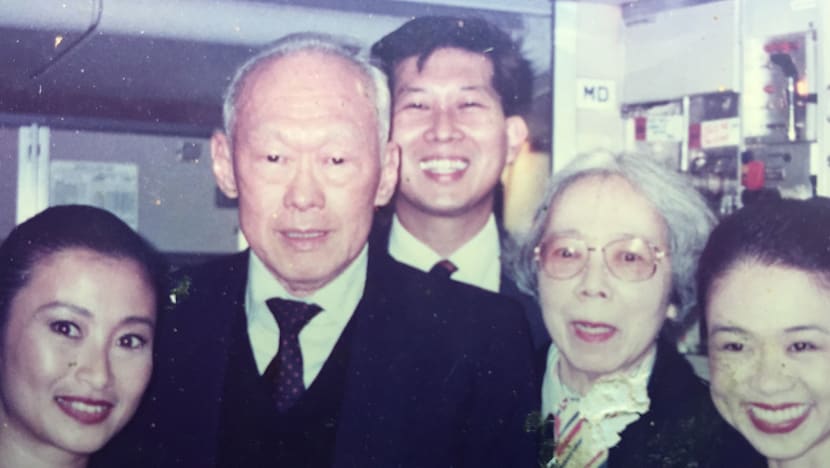
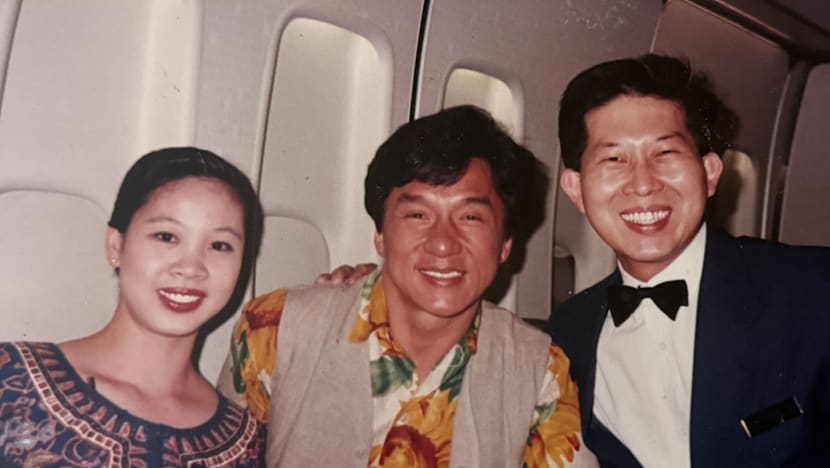
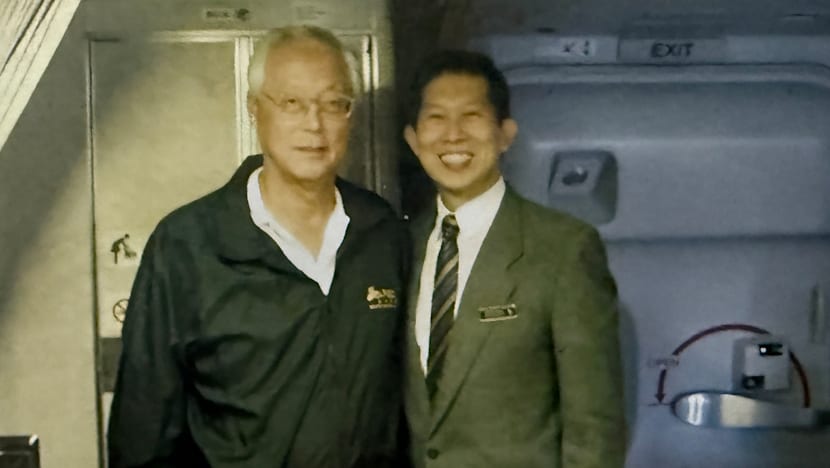
Of all the upsides his job offered him through the decades, what he cherished most was the camaraderie he shared with his colleagues.
He reminisced fondly about his early years of flying, when he and his colleagues had no mobile devices to distract or command their attention.
During layovers, they would spend nearly every second together, going on tours together, sharing jokes and laughter over food and drinks, even for longer stays of a few days in destinations such as Honolulu in Hawaii.
Without smartphones and digital tablets available to kill time, these layovers were opportunities for "a lot of bonding" to take place, which in turn boosted their ability to communicate and work together as a team, he said.
"Up there, we knew we were one," he added.
THE NOT-SO-FUN PARTS: JET LAG AND MISSED BIRTHDAYS
Of course, working in the skies was not all glamour and cocktails; it came with its fair share of demands and unpredictability.
Mr Ng has encountered passengers suffering anxiety attacks, heart attacks, strokes and other emergencies mid-flight. While these high-stakes moments still stay with him, he was thankful for the training that prepared him to help.
"Being able to respond to a medical emergency on board with my colleagues, (using) CPR or even AED (automated external defibrillators) to save a life together – it does give us a sense of fulfilment," he said.
Mr Ng was not coy about admitting that he had made his fair share of mistakes.
Once, as a young steward, he gently tapped a drunkard passenger on the head to wake him. "Not the right thing to do," Mr Ng chuckled ruefully.
However, in his experience, the most effective weapons in his arsenal for diffusing tension and trouble were deceptively simple: honesty and humility.
Most of the time, he observed, passengers would get upset about situations beyond the cabin crew's control, such as delayed takeoffs or waiting longer than usual to disembark.
In moments like these, Mr Ng said, a calm and friendly attitude was usually enough to soothe these annoyed travellers. "They will not blame you, because they know it's not your fault."
Seeing both the Leaning Tower of Pisa in Italy and the Empire State Building in the US in the same month sounds amazing, but flying roughly 80 hours a month (or around six to seven flights) had its costs.
Mr Ng remembered often being unable to sleep when he was back home in Singapore, lying awake in bed until the wee hours.
For a long time, this didn't bother him too much. "If I sleep, I sleep. If I can't sleep, no point fighting the pillow."
However, as he grew older, jet lag became a different beast – stronger and more stubborn. Over the last few years, sleeplessness started to feel more disorientating and discomforting for him, often causing him to wonder "whether it's day or night".
As someone who usually ends up wandering around in a fog when my sleep is disrupted, I was baffled by Mr Ng's relaxed attitude towards sleep.
Running on this kind of haphazard sleep schedule, I asked, surely there must have been moments when the polished veneer cracked? Occasions where even the most seasoned of crew members succumbed to the odd bad mood or two?
Almost immediately, Mr Ng slipped into his default customer-ready smile before answering.
"Once we step into the cabin, we are all smiles. That's how it is," he said, adding that they "hide" their tiredness "very well".
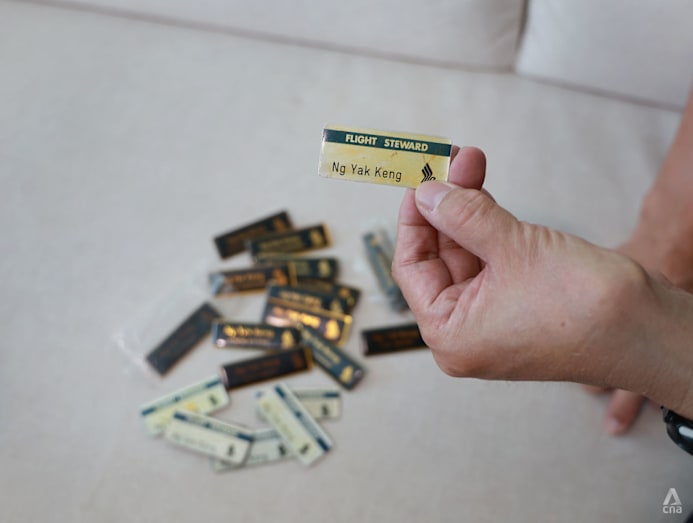
For Mr Ng and his teammates, professionalism was always the highest order of the day. Proper preparation before setting foot on any aircraft was key. For instance, before long-haul flights, Mr Ng always did all he could to get a good night's sleep beforehand.
"The passengers are expecting good service and we have to deliver," he said. "There's no time to sulk, to feel tired or say that I'm tired because there's a job that needs to be done."
Flipping through his countless photo albums, Mr Ng suddenly revealed an unexpected fact about himself.
"I can do 41,000 feet in the air, but four storeys up on a corridor of a HDB housing block? My head spins," he confessed.
His fear of heights is a source of bemusement for his loved ones, considering his chosen career path.
His daughter, Ms Amanda Ng, recounted a family trip to Malacca, where he froze on a modest amusement ride. "He was glued to his seat, hands sweaty, laughing nervously," the 29-year-old creative strategist said, grinning wryly.
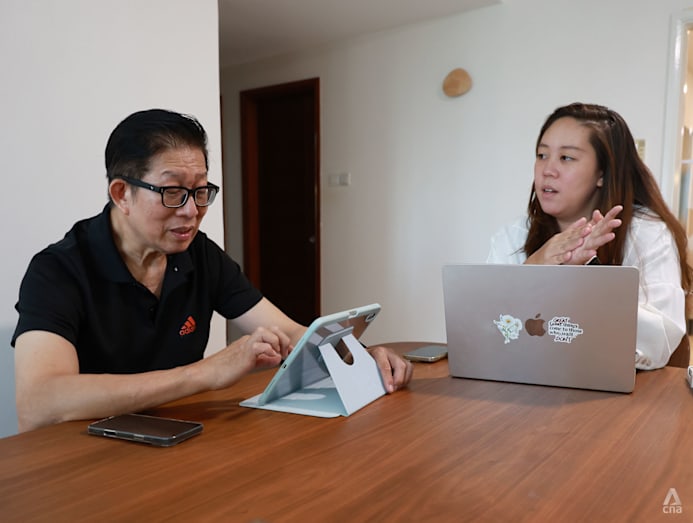
Exhaustion aside, constantly flying all around the world takes a toll not only on crew members, but their loved ones.
"Birthdays are not important to me," Mr Ng said matter-of-factly. "Or even New Year or Christmas. After you've been flying so many years, you don't tend to celebrate."
Ms Ng, the older of Mr Ng's two daughters, didn't mince words either: "He misses Chinese New Year all the time, (as well as) Christmas and New Year. We just ask him, 'Are you in?' If he's in, okay, cool."
She was aware that it may sound "heartless" to others, but in reality, the family had worked out their own trade-offs over the years.
For instance, they celebrate each other's birthdays within the month, rather than on the actual dates. "We work around how he works," she said.
What is it like to now have her father grounded at home by retirement?
"We are so used to him not being around. Now that he's always around, it gets a bit suffocating," she said bluntly. "It's like COVID-19 all over again."
A COLLECTOR AND REPAIRMAN
Through the decades, Mr Ng has become a collector of time itself.
In his living room were vintage appliances: rotary phones, boombox radios, classic diamond clocks. In the last few years, whenever he wasn't cruising the skies, he was trawling Carousell searching for old radio cassette players.
He didn't just acquire them to look at them, though. He loved tinkering with them, rewiring and restoring them to function.
He enjoyed how these items took him back to the 1960s and '70s of his youth, when the clicking of rotary dials and the whirr of cassette players were part of everyday life.
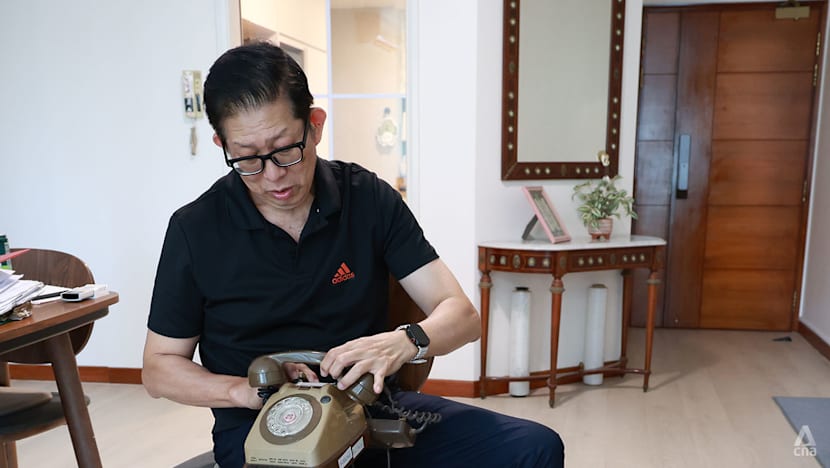
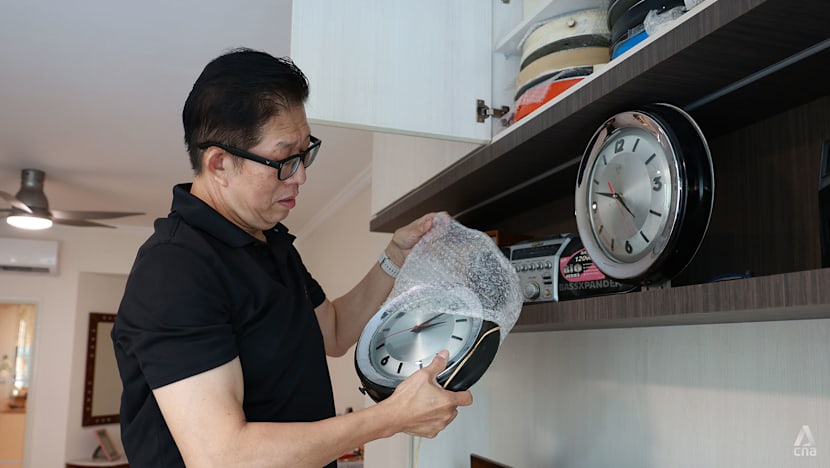
Part of his collection were also mementoes of Singapore aviation's history: old uniforms, name tags from every rank he held, even an apron once issued to all SIA stewardesses in the late 1980s.
"(The apron) lasted a few months before it was taken off course. It looked ugly over the kebaya," he explained, referring to the traditionally inspired uniform donned by all female SIA cabin crew members.
Flipping through albums of old training photos, he pointed out that the iconic chignon – hair in a knot – now worn by all SIA stewardesses was not yet implemented as part of the uniform. Instead, the female staff members in his photos wore their hair in various styles, from chic bobs to longer layers.
In one photograph from the 1980s, a 20-something Mr Ng looked dapper in an earlier iteration of the steward's uniform, featuring a powder-blue jacket and an oversized bow tie, which passengers often compared to a large moth, he said with a chuckle.
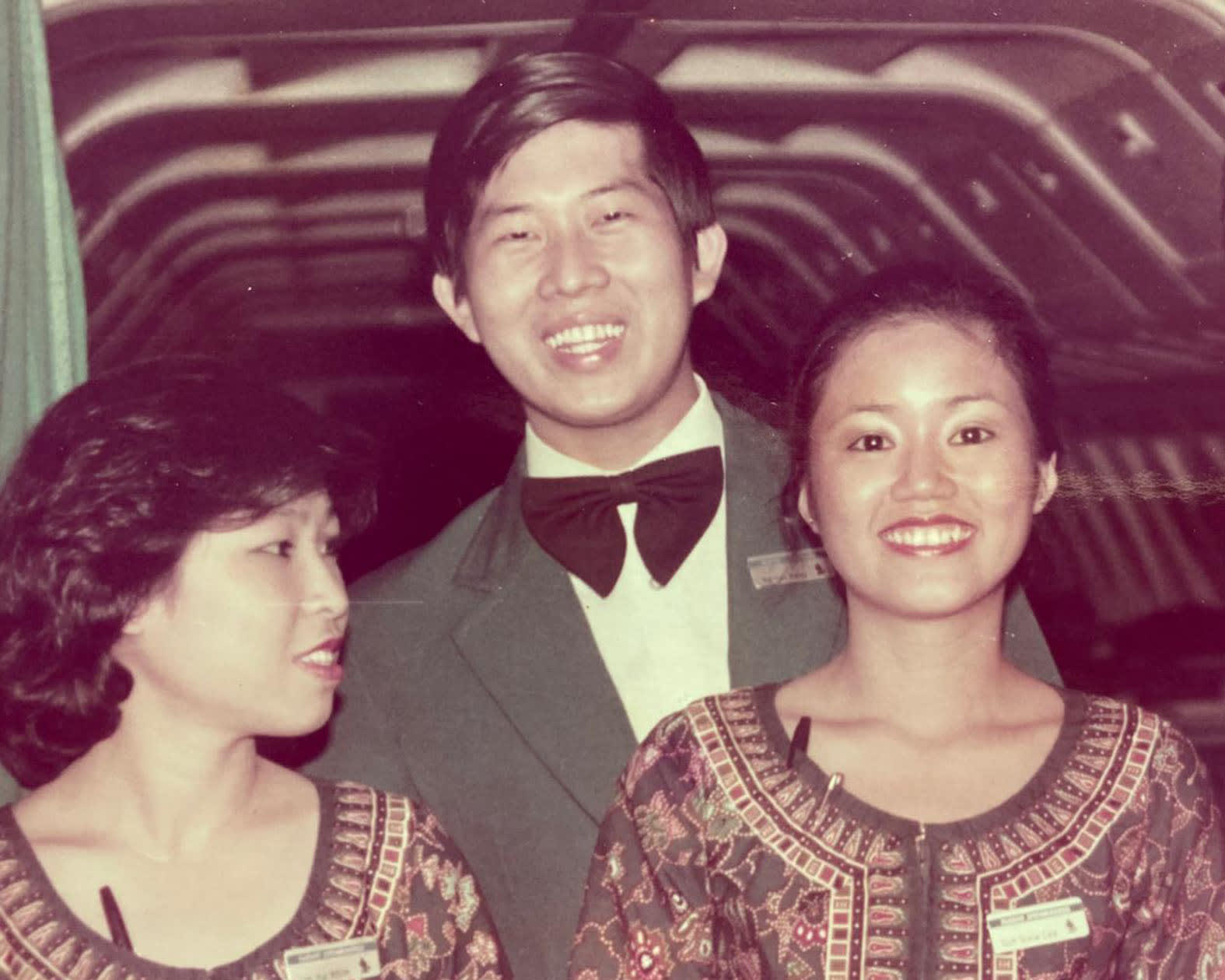
In a way, Mr Ng himself is a living archive of this relatively young industry.
He often finds himself awed by the advancements constantly being made in aviation design and technology.
He still recalls how plane toilets did not even have suction up until the 1980s. Instead, a flap lifted to let excreted waste fall through to a collection tank.
The first time he worked a galley with an in-built microwave, he marvelled: "It's almost like a kitchen now."
Gone are the days of flying being a "luxury".
"Everybody would dress up for flights, prim and proper. Not everybody could buy a (plane) ticket," he said pensively.
Now, budget airlines make air travel more accessible to all, and it is not unusual to see passengers in sweatpants, shorts and flip-flops.
"Today, everybody travels, everybody has a passport," he said.
LAST FLIGHT
In July, Mr Ng embarked on his very last flight as a steward, a seven-hour trip from Adelaide, Australia to Singapore. He had expected it to be an emotionally affecting journey, but it ended up being "a normal day in the office" for him.
He had only recently become aware of a nickname colleagues had used to refer to him for a long while now: "legend".
"They know me as this guy who has a company staff number ... nobody else has," he said, referring to a number assigned to employees. His batch number had five digits and started with "1", while current batch numbers have six digits, indicative of how long he had been there and his seniority.
However, everyone's story comes to a final chapter someday, even that of legends.
For Mr Ng, loneliness is not the enemy, not when there are squash games to play, gyms to visit and new languages to learn.
What about moments when he's bored? "I'll just go to JB (Johor Bahru across the Causeway)," he quipped. "That’s what Singaporeans do.”
He flipped through all the passports he had held over the last 46 years. Save for the odd visa or two, most of them were comically devoid of the colourful immigration stamps a well-seasoned traveller would have collected over the years.
He attributes this to his almost exclusive use of the crew lane, a dedicated immigration channel that allows airline employees to bypass regular passport control and the usual stamps.
"My passport is very clean," he said with a laugh. "No 'chops' at all."
For Mr Ng, then, the real reckoning of retirement centres on his personal identity.
Having spent his entire adult life working as a cabin crew member, he admitted that by now, his "steward self" and his core self have become one and the same. "I am who I am today because of the 46 years (I spent) in the line."
Thoughtfully, he added: "I think it's better to have more time to myself now."
He is looking forward to getting started on checking things off his bucket list, which he would have less time to accomplish if he had stayed another year as he had originally planned.
"(Retirement) is not the end of the world. It's just discovering your second life."














